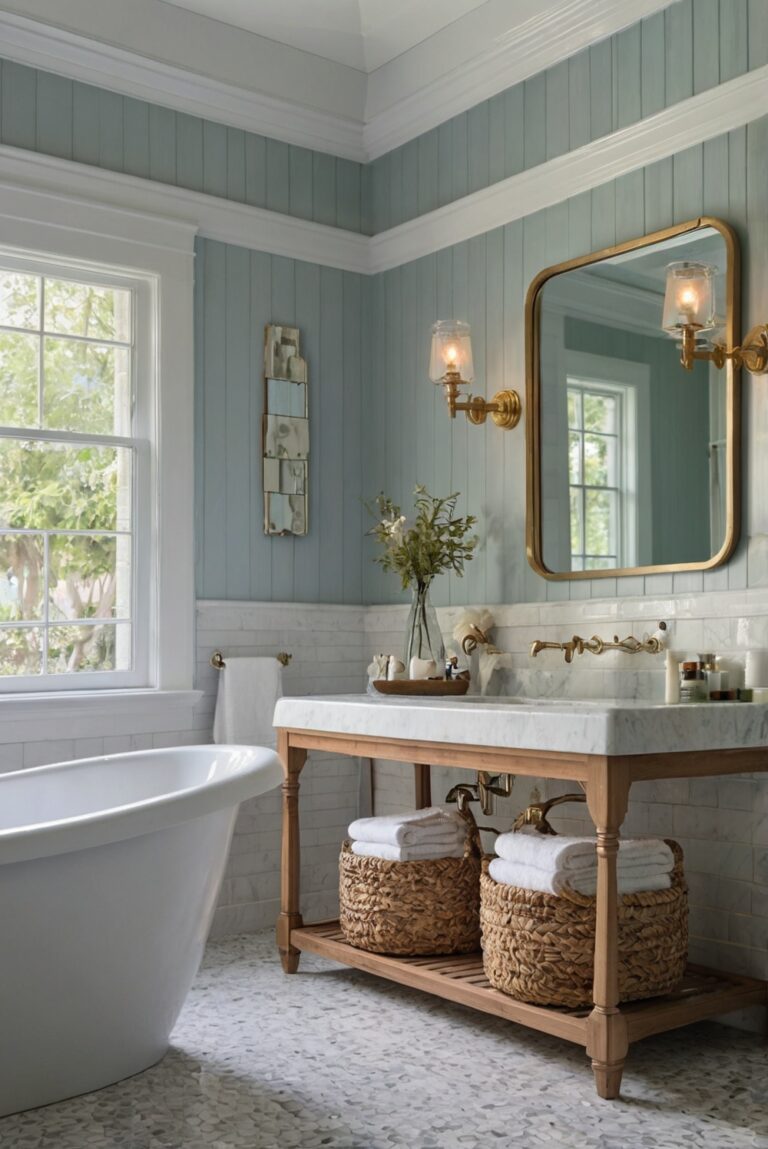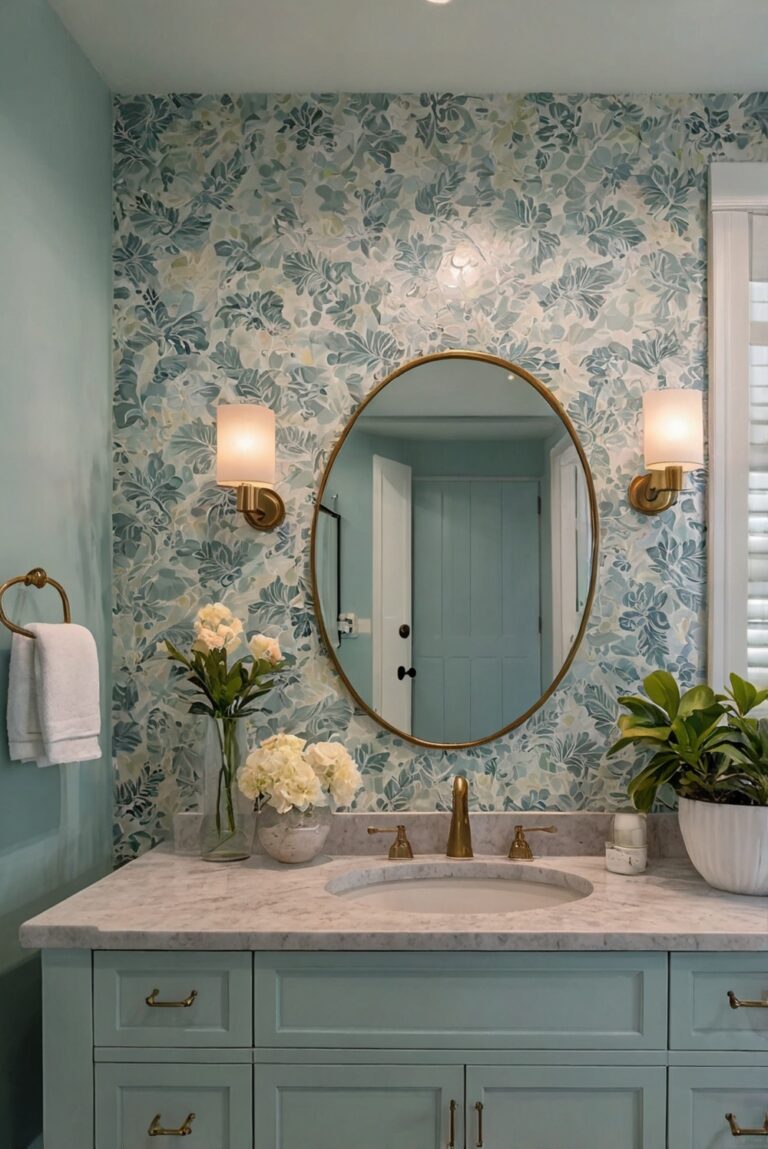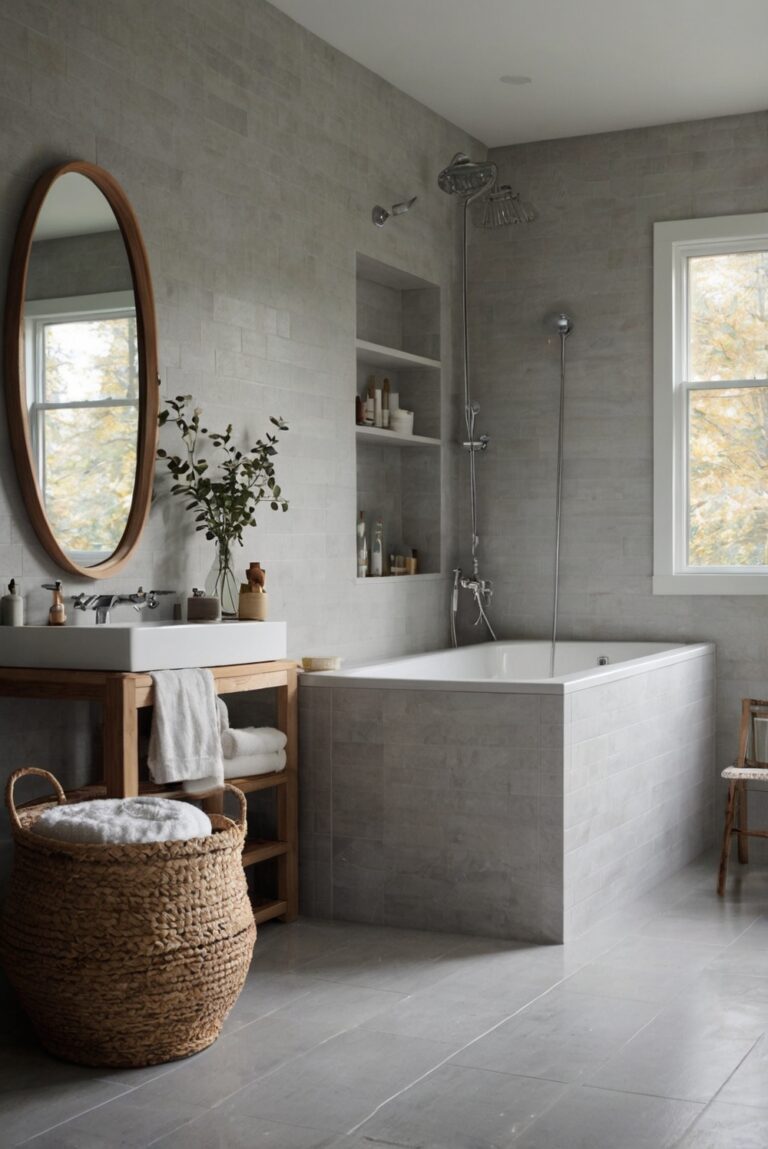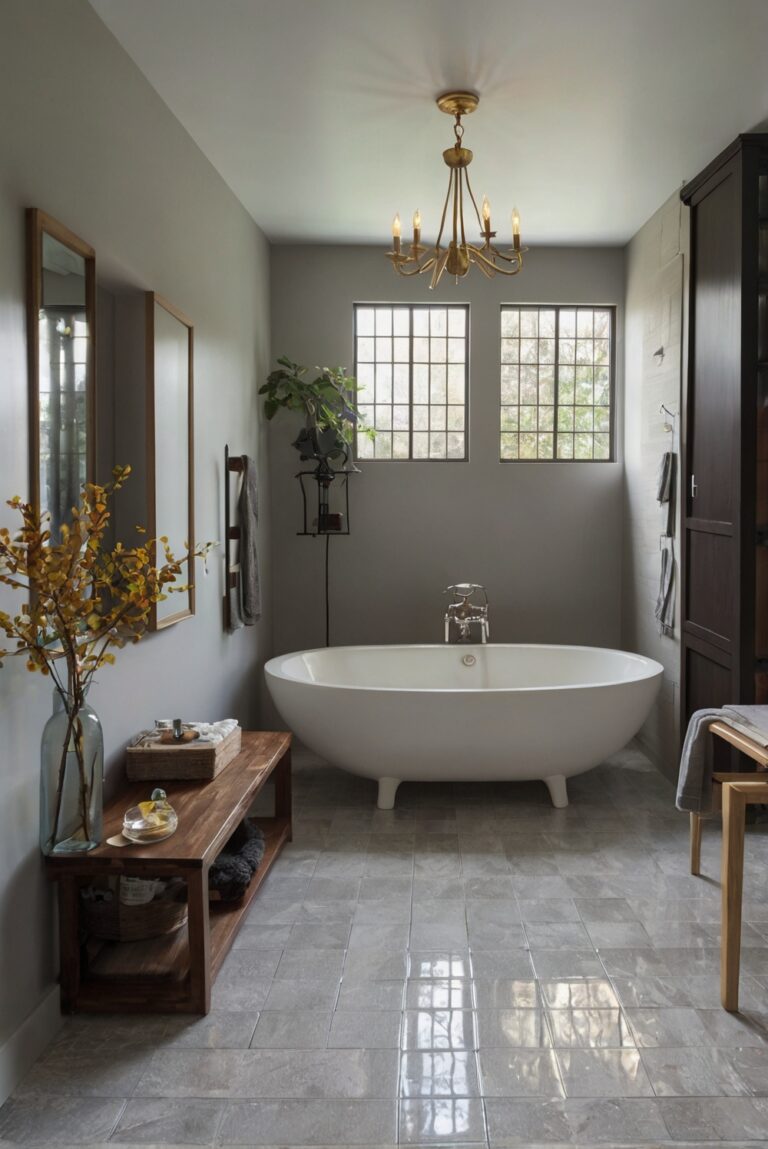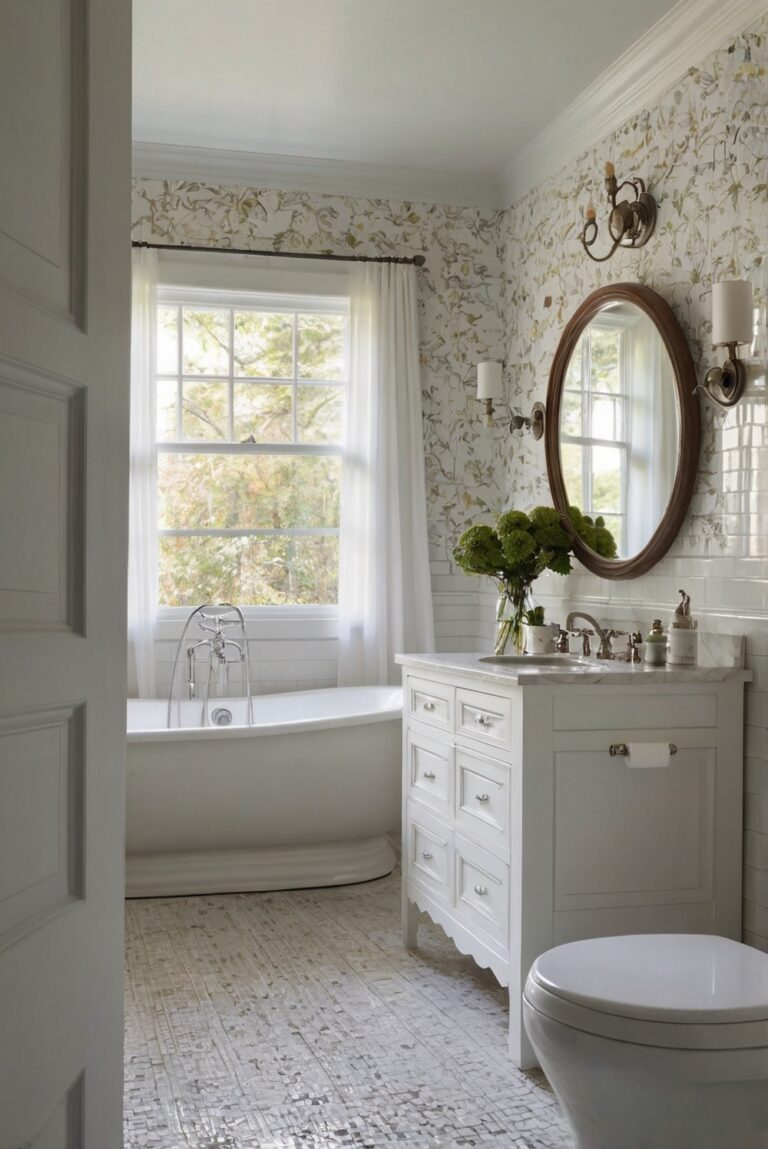What are the benefits of water-saving toilets for eco-friendly bathrooms?
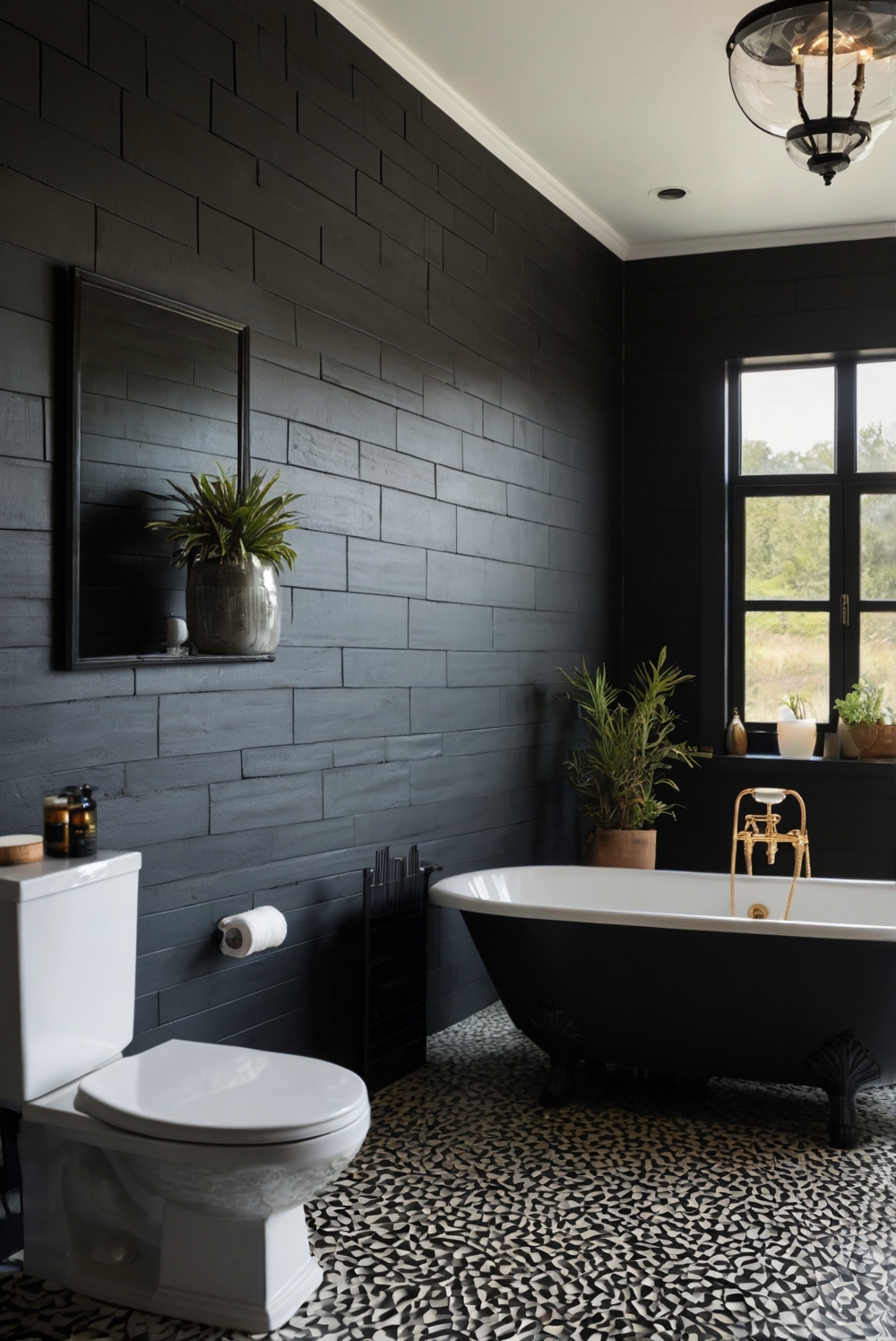
Discover the advantages of water-saving toilets in eco-friendly bathrooms. Dive into the daily routine of an interior designer and explore décor ideas for sustainable living spaces.
Benefits of water-saving toilets for eco-friendly bathrooms include:
– **Conserves Water**: Water-saving toilets use less water per flush, reducing water wastage and promoting sustainability.
– **Cost-Effective**: Lower water usage results in decreased water bills, saving money in the long run.
– **Environmentally Friendly**: By reducing water consumption, water-saving toilets help conserve natural resources and minimize the environmental impact.
– **Modern Design**: Many water-saving toilets come in stylish designs that can enhance the overall aesthetics of the bathroom.
– **Easy to Install**: Installing a water-saving toilet is a simple process that can be done as part of a home decorating project.
Overall, incorporating water-saving toilets in eco-friendly bathrooms is a practical and environmentally conscious choice for home interior design.
What are the benefits of water-saving toilets for eco-friendly bathrooms?
Water-saving toilets offer significant benefits for eco-friendly bathrooms. Here are some of the key advantages:
1. Environmentally Friendly:
Water-saving toilets help conserve water, which is crucial for protecting the environment. By using less water with each flush, these toilets contribute to water conservation efforts and help reduce the strain on water resources.
2. Cost Savings:
Installing water-saving toilets can lead to cost savings on water bills in the long run. Since these toilets use less water per flush, they can help lower water consumption and ultimately reduce utility costs for homeowners and businesses.
3. Sustainable Design:
Water-saving toilets are part of a sustainable design approach in eco-friendly bathrooms. By incorporating these toilets into the overall design, individuals can create a more sustainable and environmentally conscious space.
Additional Benefits:
In addition to the key benefits mentioned above, water-saving toilets offer several other advantages for eco-friendly bathrooms:
Improved Water Efficiency:
Water-saving toilets are designed to maximize water efficiency, ensuring that each flush uses the minimum amount of water necessary. This not only helps conserve water but also promotes sustainable water usage in households and commercial buildings.
Enhanced Sustainability:
By choosing water-saving toilets for eco-friendly bathrooms, individuals contribute to a more sustainable future. These toilets play a role in promoting environmental stewardship and reducing the overall ecological footprint of buildings and homes.
In conclusion, water-saving toilets offer a range of benefits for eco-friendly bathrooms, including environmental friendliness, cost savings, sustainable design, improved water efficiency, and enhanced sustainability. By incorporating these toilets into bathroom design and renovation projects, individuals can contribute to water conservation efforts and create more eco-friendly living spaces.
1. Why are water-saving toilets important for eco-friendly bathrooms?
Water-saving toilets are crucial for eco-friendly bathrooms because they help conserve water, a precious natural resource. By using less water per flush, these toilets reduce overall water consumption in a household, contributing to water conservation efforts and environmental sustainability. This makes them an essential component of eco-friendly bathrooms, as they align with the goal of reducing water wastage and promoting responsible water usage.
2. How do water-saving toilets contribute to environmental sustainability?
Water-saving toilets play a significant role in promoting environmental sustainability by reducing water usage and minimizing the strain on water resources. By using advanced flushing mechanisms and technology, these toilets help lower water consumption without compromising on performance. This results in decreased water wastage and a smaller environmental footprint, making water-saving toilets an eco-friendly choice for bathrooms.
3. What are the financial benefits of installing water-saving toilets in bathrooms?
Installing water-saving toilets in bathrooms can lead to financial savings for homeowners in the long run. By using less water per flush, these toilets help lower water bills and reduce overall water expenses. Additionally, some municipalities offer rebates or incentives for installing water-saving fixtures, further offsetting the initial cost of purchasing and installing water-saving toilets. This makes them a cost-effective investment that not only benefits the environment but also saves money for homeowners over time.
4. How do water-saving toilets compare to traditional toilets in terms of water efficiency?
Water-saving toilets outperform traditional toilets in terms of water efficiency by using less water per flush. Traditional toilets typically use more water per flush, leading to higher water consumption and wastage. In contrast, water-saving toilets are designed to optimize water usage while maintaining effective flushing performance. This makes them a more sustainable and environmentally friendly option for bathrooms, as they help reduce overall water usage and promote water conservation efforts.
5. What are some key features to look for in water-saving toilets for eco-friendly bathrooms?
When choosing water-saving toilets for eco-friendly bathrooms, it’s essential to consider certain key features that enhance water efficiency and performance. Look for toilets with dual-flush mechanisms, which allow users to select between a full flush and a partial flush based on their needs. Additionally, consider toilets with pressure-assisted flushing systems, which can reduce water usage while ensuring effective waste removal. Opt for models with the WaterSense label, indicating that they meet EPA standards for water efficiency. By selecting toilets with these features, you can maximize water savings and sustainability in your bathroom.


